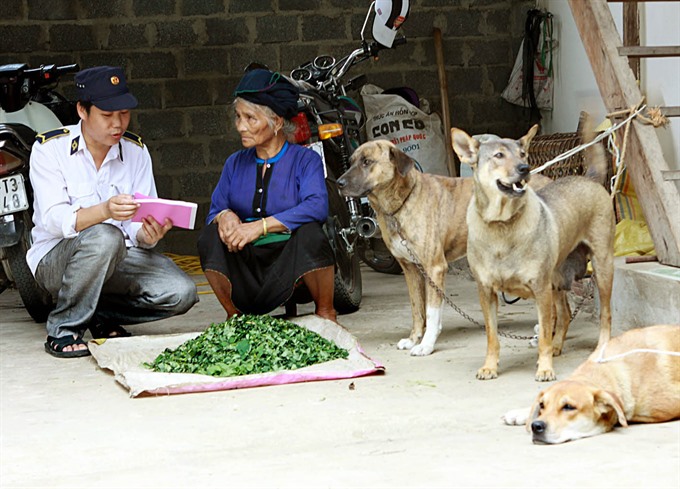 Society
Society

Dozens of people have died of rabies since the beginning of the year, mostly due to low vaccination rates in dogs and cats.
 |
| A veterinary official offers advice on how to prevent rabies to a resident in the northern province of Yên Bái’s Văn Chấn District. The country reported 49 human rabies deaths in the first nine months of 2016, in 20 provinces and cities. - VNA/VNS Photo Dương Ngọc |
HÀ NỘI – Dozens of people have died of rabies since the beginning of the year, mostly due to low vaccination rates in dogs and cats.
The country reported 49 human rabies deaths in the first nine months in 20 provinces and cities, according to the Preventive Health Department.
Last year, there were 78 rabies deaths, the Central Hygiene and Epidemiology Institute reported.
According to a Veterinary Department report, only 2.9 million of the country’s estimated eight million dogs have been vaccinated. On average, some 400,000 people are bitten each year by cats and dogs.
The country has been making efforts to reduce dog bite incidents and fatalities in recent years. By increasing the number of vaccinated animals, it aims to eliminate rabies by 2020.
The northern mountainous region is considered a hot spot for the rabies virus with over 80 per cent mortality, according to the statistics of the Health Ministry.
Most human deaths from rabies occur because people aren’t aware of the consequences and don’t go to get vaccinated after being bitten.
Trần Đắc Phu, head of the department, said the rabies virus is transmitted through the saliva of infected animals.
The incubation period in humans is typically one to three months. Untreated rabies causes acute encephalitis and is almost always fatal.
Rabies infected animals can appear very aggressive, attacking for no reason. They may look like they are foaming at the mouth or drooling because they cannot swallow their saliva. Not long after they reach that point, they die. Most animals can transmit rabies days before showing symptoms.
Initially, like in many diseases, the symptoms are non-specific - fever, headache and malaise. This may last several days. At the site of the bite, there may be some pain and discomfort. Symptoms then progress to confusion, delirium, abnormal behaviour and hallucinations. If it gets this far, the disease is nearly always fatal.
Health officials emphasise the need to raise public awareness of the danger of the disease, improve the ability of medical workers to identify it and strictly implement vaccinations against rabies.
Rabies kills about 55,000 people a year worldwide, according to the World Health Organisation, which said children under 15 are the most common victims. – VNS




